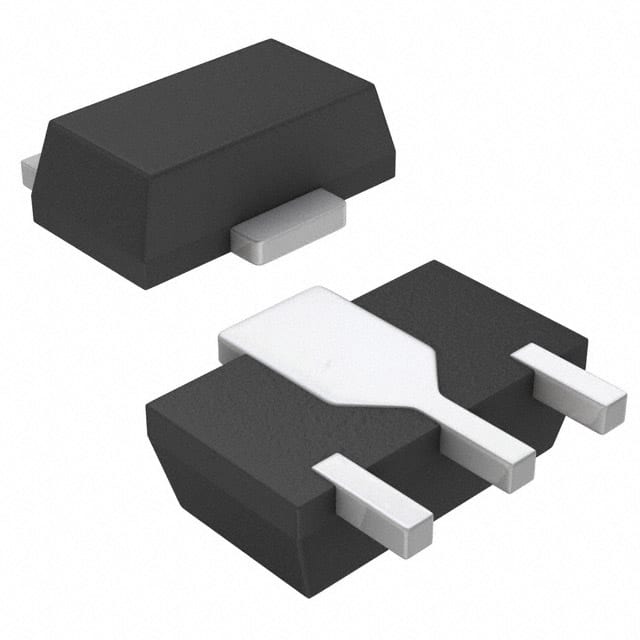2SB1302S-TD-E
Product Category: Transistor
Basic Information Overview: - Category: Bipolar Junction Transistor (BJT) - Use: Amplification and switching in electronic circuits - Characteristics: High current and voltage capability, low power consumption - Package: TO-3P - Essence: Power transistor for high-speed switching applications - Packaging/Quantity: Bulk packaging, quantity varies by supplier
Specifications: - Collector-Base Voltage (VCBO): 230V - Collector-Emitter Voltage (VCEO): 230V - Emitter-Base Voltage (VEBO): 5V - Collector Current (IC): 15A - Power Dissipation (PD): 80W - Transition Frequency (fT): 30MHz
Detailed Pin Configuration: - Pin 1 (Emitter) - Pin 2 (Base) - Pin 3 (Collector)
Functional Features: - High current gain - Low saturation voltage - Fast switching speed
Advantages: - Suitable for high-power applications - Reliable and durable - Low distortion in amplification
Disadvantages: - Higher heat dissipation - Larger physical size compared to smaller transistors
Working Principles: The 2SB1302S-TD-E operates based on the principles of bipolar junction transistors, utilizing the control of current flow between its terminals to amplify or switch electronic signals.
Detailed Application Field Plans: - Audio amplifiers - Power supplies - Motor control circuits - RF amplifiers
Detailed and Complete Alternative Models: - 2SD1887 - MJL3281A - MJE15032
This comprehensive entry provides a detailed overview of the 2SB1302S-TD-E transistor, covering its category, specifications, pin configuration, functional features, advantages, disadvantages, working principles, application field plans, and alternative models.
Senaraikan 10 soalan dan jawapan biasa yang berkaitan dengan aplikasi 2SB1302S-TD-E dalam penyelesaian teknikal
What is the maximum collector current of 2SB1302S-TD-E?
- The maximum collector current of 2SB1302S-TD-E is 15A.
What is the maximum collector-emitter voltage of 2SB1302S-TD-E?
- The maximum collector-emitter voltage of 2SB1302S-TD-E is 230V.
What is the power dissipation of 2SB1302S-TD-E?
- The power dissipation of 2SB1302S-TD-E is 80W.
What are the typical applications for 2SB1302S-TD-E?
- Typical applications include audio amplifiers, power management systems, and general electronic circuits.
What is the gain (hFE) of 2SB1302S-TD-E?
- The gain (hFE) of 2SB1302S-TD-E typically ranges from 60 to 320.
Is 2SB1302S-TD-E suitable for high-power applications?
- Yes, 2SB1302S-TD-E is suitable for high-power applications due to its high collector current and power dissipation capabilities.
Does 2SB1302S-TD-E require a heat sink for operation?
- Yes, it is recommended to use a heat sink when operating 2SB1302S-TD-E at high currents or power levels to ensure proper thermal management.
What are the thermal characteristics of 2SB1302S-TD-E?
- The thermal resistance junction to case (RthJC) is 1.25°C/W, and the thermal resistance junction to ambient (RthJA) is 62.5°C/W.
Can 2SB1302S-TD-E be used in push-pull amplifier configurations?
- Yes, 2SB1302S-TD-E can be used in push-pull amplifier configurations due to its high current and voltage ratings.
Are there any specific precautions to consider when using 2SB1302S-TD-E in technical solutions?
- It is important to ensure proper heatsinking, avoid exceeding the maximum ratings, and follow the manufacturer's datasheet recommendations for optimal performance and reliability.


